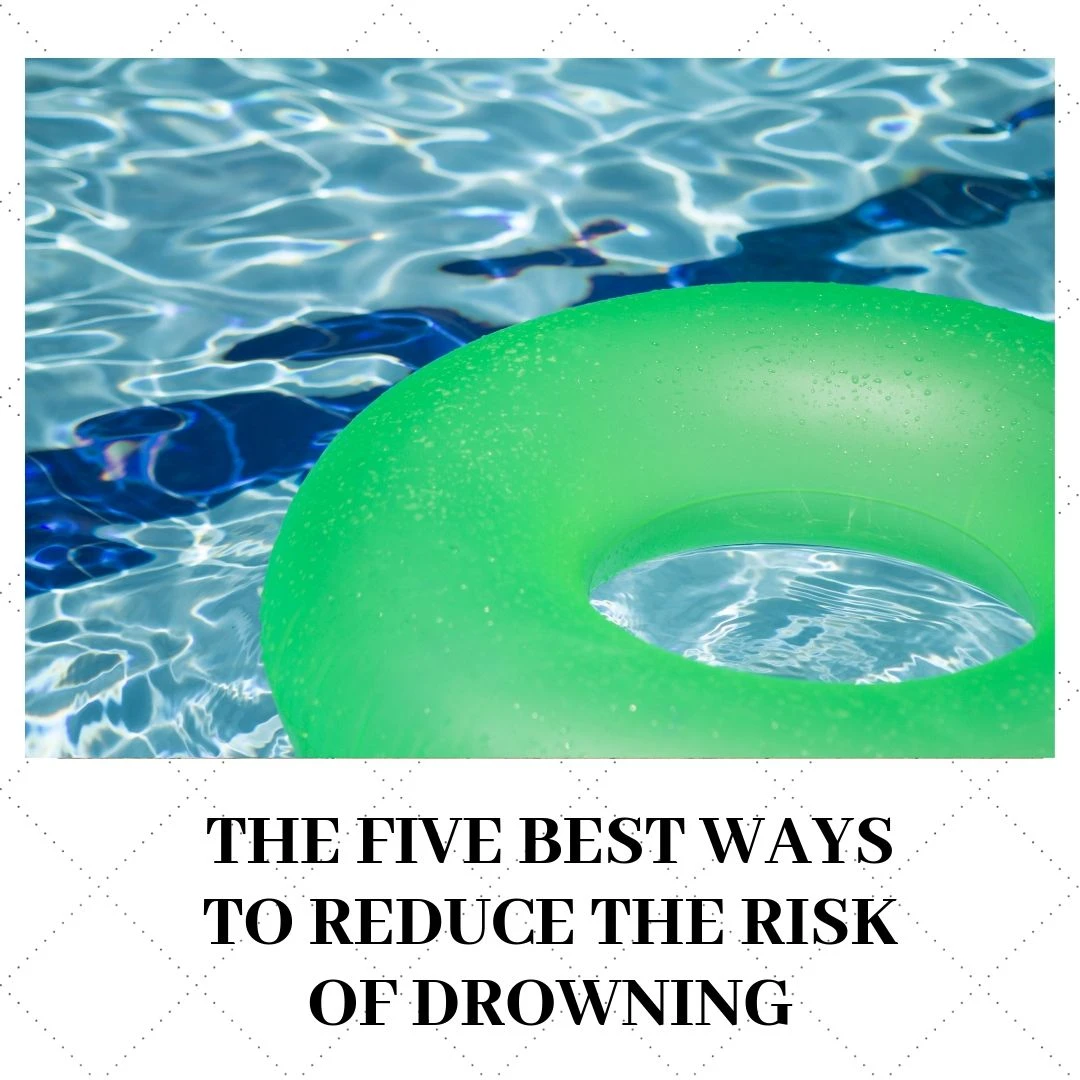Most people have a healthy respect of water and for good reason: did you know that in children ages 1 – 4, drowning is the leading cause of accidental death? This takes many by surprise, because it doesn’t seem to receive the attention that SIDS, car seat safety, and fire detectors do. People who own swimming pools absolutely need to take steps to reduce the risk of drowning, but children can also drown in toilets, washing machines, baby pools, lakes, the ocean, etc. Many adults drown each year as well. It’s a good idea for everyone, especially homeowners, to be aware of ways to lessen risks.
There are many ways to reduce to risk of drowning but here are five that are far-reaching and likely to help many people of all ages.
The Five Best Ways To Reduce The Risk Of Drowning
- Ignore your phone
- Don’t rely on water wings
- Install proper barriers
- Know CPR
- Stay In Arm’s Reach
Ignore your phone, but don’t leave it inside. Nine out of ten kids who drown were being supervised by their parents, but their parents quickly took their eyes off of them to send a text or read an email or peruse Facebook or Twitter. Keep your phone with you in case you need to call 911, but don’t spend time on your phone.
Never rely on “water wings” or “puddle jumpers” to keep kids afloat. In fact, many people think they may contribute to drownings because they make slightly older children believe they have swimming skills they don’t actually have, and that may make children more likely to try to enter the water without them. Periodically place your child in the water without them (with you holding them of course) so that they understand they will not float. Better yet, sign children up for swimming lessons as soon as possible. You can use these devices as long as you are right there with a child, but it should never ever be in place of you, or even across the pool from you. The more people that are in the pool, the more dangerous it actually is – because it’s likely a child could go under the surface of the water with nobody noticing. Many people think that a child drowning is very noisy and disruptive; it is actually very quiet. The younger the child, the quieter it is.
Make sure you install proper barriers around your pool. This is probably the law in your town (or county ordinance) and you should definitely find out, but regardless, make sure you have a fence that is at least four feet high all the way around your pool, and that it is locked at all times. You can also install security alarms that let you know if someone breaches the fence or the pool, as well as motion detectors that alert you of unusual activity (which may be helpful if you worry about wildlife drowning, too.) Unfortunately, children from the neighborhood can become unsupervised and wander into your yard, and it has happened that people have come home to find a drowned child in their pool. This is true of a pond as well. Be sure to know the laws and consider the expense involved before you get a pool or make a lake in your yard – these barriers are not optional; they are vital for legal and ethical reasons.
You need to know CPR, and make sure everyone in your house does. Most children ten and older can learn CPR. It takes very little time for someone to be underwater before they need to be resuscitated, and many times it can be done successfully if performed immediately, but not if you wait for an ambulance to arrive (which takes minutes to arrive, and brain damage can begin after four minutes without breathing.) You can take a class at your local fire department, hospital, community college, YMCA, church, and other community organizations. Call your local city hall for direction on where to find a course for a nominal fee.
Stay in arm’s reach of children and those who can’t swim while you’re near water. Don’t wander off to the other end of the pool to speak to someone, don’t go inside to get lemonade, don’t even go to the bathroom alone. It’s inconvenient to get everyone out of the water and take them with you, but the regret of not doing so could be unimaginable. It can take literally only twenty-five seconds for a baby’s lungs to fill with water. That’s less time than it takes to go to another bathroom to grab a towel, dig in a bag for sunscreen, or kiss a child goodbye.
Stay safe this summer!
Are You Thinking of Buying a Home in Dubois County?
Use our site to search homes for sale in Jasper, Dubois, Spencer, Martin and Davis counties and all of our surrounding areas. Unlike the “big name” sites out there, at Sell 4 Free Welsh Realty our site is directly connected to our local MLS and is updated with new homes every hour. By signing up for New Listing alerts you can stay on top of the newest homes for sale and get price change alerts so you can stay ahead of other buyers and beat them to the hottest deals!
Start your Home Search now
[idx-omnibar styles=”1″ extra=”0″ min_price=”0″ ]
Popular Jasper Indiana Home Searches:
- Homes for sale Evansville IN
- Southern Indiana Homes for Sale
- Santa Claus Indiana Cabins
- Homes for sale Newburgh IN
- Homes for sale Dubois County Indiana
- Homes for Sale Jasper Indiana
- Homes for sale in Huntingburg Indiana
- Ferdinand Indiana Homes
- Farms for sale in Indiana
- Homes for sale Santa Claus Indiana
Newest Homes for Sale in Dubois County
View the newest homes listed in Dubois County in the last 10 days:
[impress_property_showcase property_type=”savedlinks” saved_link_id=”28053″ agent_id=”” show_image=”1″ use_rows=”1″ num_per_row=”3″ max=”3″ order=”default” styles=”1″ new_window=”0″ ]















